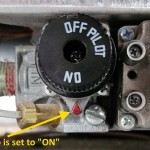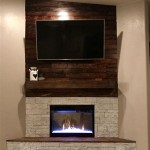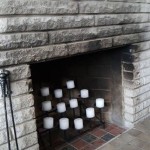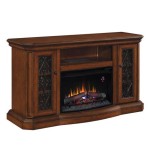Rock Veneer Fireplace: Aesthetics, Installation, and Considerations
A fireplace serves as a focal point in many homes, providing warmth and ambiance. Rock veneer fireplaces have emerged as a popular choice for homeowners seeking to enhance the visual appeal of their living spaces. This article explores the characteristics of rock veneer fireplaces, the installation process, and crucial considerations for those contemplating this home improvement project.
Rock veneer, unlike natural stone, which is quarried in large blocks, is a thin layer of either natural or manufactured stone applied to a supporting surface. This construction method allows for the aesthetic benefits of natural stone at a lower cost and with reduced structural requirements. Rock veneer fireplaces offer various advantages, from enhancing the aesthetic appeal of a room to increasing a home's overall value.
Aesthetic Versatility of Rock Veneer
One of the primary reasons for the popularity of rock veneer fireplaces is the extensive range of aesthetic options available. Rock veneer comes in a wide variety of colors, textures, and styles, enabling homeowners to customize their fireplace to complement the existing décor. Natural stone veneers offer a timeless and authentic look, featuring variations in color and texture that are inherent to natural materials. Manufactured stone veneers, on the other hand, can replicate the appearance of natural stone while offering consistent color and texture, sometimes at a lower price point. The aesthetic choices are diverse, from rustic fieldstone to sleek river rock, allowing for seamless integration of the fireplace into any design scheme.
Furthermore, the design flexibility extends beyond the type of stone. The size and shape of the individual veneer pieces, as well as the way they are arranged, can significantly impact the overall aesthetic. Tight-fitting veneers can create a modern, streamlined appearance, while wider mortar joints and irregularly shaped stones can evoke a more traditional and rustic feel. This adaptability makes rock veneer a suitable option for a broad range of architectural styles, from contemporary to traditional.
Ultimately, the aesthetic versatility of rock veneer fireplaces enables homeowners to create a unique and personalized focal point that reflects their individual tastes and enhances the overall ambiance of their living space. Careful consideration of the stone type, color, texture, and arrangement is crucial to achieving the desired aesthetic outcome.
Installation Process: Key Steps and Considerations
The installation of a rock veneer fireplace involves several key steps that must be followed meticulously to ensure a durable and aesthetically pleasing result. While some homeowners may choose to undertake this project as a do-it-yourself endeavor, professional installation is often recommended, particularly for complex designs or when dealing with existing fireplace structures.
The first step is preparing the surface. The surface to which the veneer will be applied must be clean, structurally sound, and properly prepared to accept the mortar that will hold the veneer in place. This typically involves applying a layer of metal lath to the existing wall. Metal lath provides a mechanical key for the mortar, ensuring a strong bond and preventing the veneer from detaching over time. The lath is secured to the wall using nails or screws, ensuring it is taut and free of any loose areas.
Next, a scratch coat of mortar is applied to the metal lath. This layer fills the gaps in the lath and creates a level surface for the veneer application. The scratch coat is typically allowed to cure for 24-48 hours before the veneer is applied. This curing period allows the mortar to harden and develop sufficient strength to support the weight of the veneer.
The actual application of the rock veneer involves carefully selecting and placing each stone according to the desired design. Mortar is applied to the back of each stone, and the stone is then pressed firmly against the scratch coat. Spacers may be used to maintain consistent joint widths between the stones. The type of mortar used is crucial and should be chosen specifically for stone veneer applications, taking into account the climate and the type of stone being used.
After the veneer is installed, the mortar joints are typically pointed or tooled to create a finished appearance. Pointing involves filling the mortar joints flush with the surface of the stone, while tooling creates a recessed or decorative joint. The choice of pointing or tooling depends on the desired aesthetic and the type of stone used. Finally, the entire surface is cleaned to remove any excess mortar and ensure a clean, professional finish.
Throughout the installation process, it is essential to adhere to building codes and safety regulations. This includes ensuring proper ventilation for the fireplace and maintaining adequate clearances from combustible materials. Professional installers are typically familiar with these codes and can ensure that the installation meets all applicable requirements.
Key Considerations for Choosing Rock Veneer
Selecting the appropriate rock veneer for a fireplace involves careful consideration of several factors, including the type of stone, the cost, the maintenance requirements, and the environmental impact. Informed decision-making is paramount to achieving a long-lasting and aesthetically pleasing result.
Natural stone veneer, while offering a unique and authentic appearance, tends to be more expensive than manufactured stone veneer. The cost differential is primarily due to the labor-intensive process of quarrying, cutting, and transporting natural stone. However, natural stone veneer offers exceptional durability and longevity, making it a worthwhile investment for some homeowners. Manufactured stone veneer, on the other hand, is typically more affordable and offers a consistent appearance. It is also lighter in weight than natural stone, which can simplify the installation process and reduce structural requirements.
Maintenance requirements are another important consideration. Natural stone veneer is generally low-maintenance, requiring only occasional cleaning to remove dirt and debris. However, some types of natural stone may be more porous than others and require sealing to protect against staining. Manufactured stone veneer is also relatively low-maintenance, but it is important to choose a high-quality product that is resistant to fading and staining. Regardless of the type of veneer chosen, regular inspection of the mortar joints is essential to identify and repair any cracks or damage.
The environmental impact of rock veneer is also a growing concern for many homeowners. Natural stone quarrying can have a significant environmental impact, including habitat destruction and air and water pollution. Choosing locally sourced natural stone can help to reduce the environmental footprint of the project. Manufactured stone veneer, while not requiring quarrying, is typically made from cement and aggregates, which also have environmental impacts. Selecting manufactured stone veneer made from recycled materials or using sustainable manufacturing processes can help to minimize these impacts.
Furthermore, heat resistance is crucial for fireplace applications. Not all rock veneers are created equal when it comes to withstanding high temperatures. It is imperative to select a veneer that is specifically rated for fireplace use. Failure to do so could result in cracking, discoloration, or even structural failure of the veneer. Consulting with a qualified stone supplier or installer is essential to ensure that the chosen veneer is suitable for the intended application.
In addition to these core considerations, aesthetics play a critical role. Consider the existing design of the room, the size of the fireplace, and the desired overall ambiance. Sample different veneer types and arrangements to visualize the final result. Lighting can significantly impact the appearance of the stone, so consider how the fireplace will be illuminated. By carefully weighing these factors, homeowners can make an informed decision and select the rock veneer that best meets their needs and preferences.

Natural Stacked Stone Veneer Fireplace Ideas

Stone Veneer Fireplace Ideas That Will Warm Up Your Home Ply Gem

Stone Fireplace Surround Ideas You Ll Love Columbia Mo

11 Stone Veneer Fireplace Surround Design Trends Where To Buy

Rock And Roll With Stone Veneer

How To Install A Stone Veneer Fireplace Shoe Makes New

Designing Luxurious Stone Fireplaces With A Treasure River Rock Selexstone Selex

17 Modern Stacked Stone Fireplace Ideas For Your Home

Stone Veneer At Com

9 Indoor Fireplaces That Will Bring Warmth And Charm To Your Home
Related Posts








